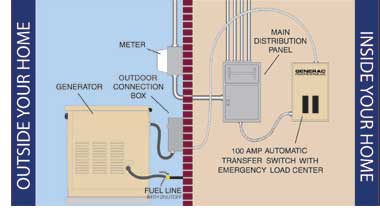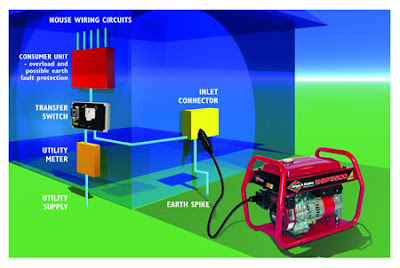Manual vs Automatic Generator Transfer Switches
Electrical generator transfer switches allow the transfer of electricity from the generator to another power source. If you have a back-up power source, your transfer switches can really come in handy. By using the transfer switches, you can redirect the power supply to a standby power source, and this is useful when the power gets disconnected for any reason.
Uses for Generator Transfer Switches
Generator transfer switches are most commonly used in homes and offices where the regular electrical supply is transferred to a generator or other power back-up devices whenever there is a power outage. The transfer is usually seamless, and there are LED lights that can help you confirm that the transfer has taken place. Apart from the power outages, transfer switches can also help where there are heavy voltage fluctuations and changes in the power supply. To prevent the whole electrical system from tripping, the source of power is alternated to the standby. As soon as the voltage is stabilized, the transfer switches transfer the power source back. Since these switches are convenient to use, they have become extremely popular with both domestic and industrial users.
Types of Generator Transfer Switches
There are two main types of generator transfer switches: manual and automatic. Given below is a brief description of the two and main differences between them.
- Manual Generator Transfer Switches
Manual transfer switches are simple toggle type switches or knobs that can be manually turned on or off to transfer the source of power to the back-up. These switches are essentially used in areas where the power outages are brief and occasional. Since they have to be turned on and off mechanically, they are best installed in places where a power outage would not cause a loss or damage to the electrical appliances and systems that are attached to the power supply. Manual transfer switches are not very easy to install, and it takes a qualified technician to install the switch into your electrical mainframes. However, these switches are quite cheap and are durable.
- Automatic Generator Transfer Switches
Automatic transfer switches, on the other hand, do not require any mechanical action. These automatically transfer power from one source to another. They are extremely convenient to use and do not need to be toggled manually. Such switches are perfect for places where even a brief power outage can cause losses to the system. As the transfer of power supply is almost instantaneous and automatic, the supply trips only for a second, allowing the appliances to continue functioning. Although these switches are more expensive than manual switches, they are easy to install, since they come in a pre-assembled box. For installation, you simply have to plug in the wires as mentioned in the installation manual. On the downside, automatic transfer switches are not as durable as the manual ones. They have a complex transfer mechanism that may burn out if there is a lot of load on the alternate sources of power. For instance, if heavy machinery is being operated when the power outage happens, the transfer switch may trip and the wiring may burn out. In this case, the switch has to be completely replaced.


